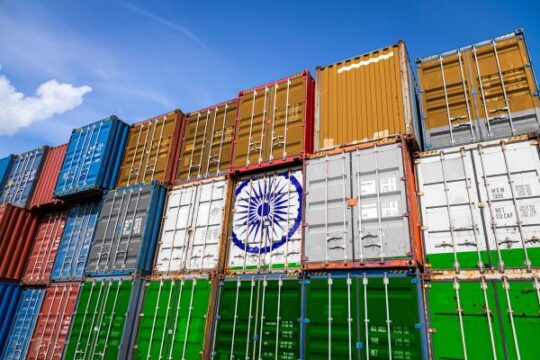
If you work in the Dangerous Goods supply chain, you’ve probably heard something like this before:
“The challenge our customer faced was one where the packing and transportation systems were siloed. The systems didn’t really talk to any of their upstream or downstream systems. They managed Dangerous Goods on Excel sheets. The problem in front of us was, how do we give them a solution that puts all of this together into a single solution?”
That statement could be about any number of North American shippers, right? But it’s not—it’s about a chemical company in India, and the speaker is Aroop Sanyal, Senior Alliances Manager at Pando, a transport management platform enterprise headquartered in Chennai, Tamil Nadu, India.
Pando recently integrated Labelmaster’s DGIS with their transportation management system to help their customers streamline compliance for shipment of Dangerous Goods.
They are the first company in India to integrate DGIS, and their experience highlights some striking similarities—and differences—between hazmat transport in India and other regions of the world. It’s a story with something to teach everyone in the global Dangerous Goods supply chain.
Compliance with international standards
Pando’s customers in India ship many of the same Dangerous Goods as companies in the rest of the world.
“We work with a few specialty chemical manufacturers, and companies who work in the agricultural sector,” says Pando Director, Enterprise Solutions Mainak Kanjilal. “We also design solutions for paint companies with paints, coatings and similar products which are highly flammable.”
Of course, Pando has customers all over the world, not just in India. And wherever their customers are, their international shipments have to comply with international Dangerous Goods regulations—the ICAO Technical Instructions and IATA DGR for air transport, and the IMDG code for ocean transport
For transport within India, there are some local nuances that come into play.
Two ministries oversee domestic DG transport
Aroop explains, “The trend that we’ve seen is that in India, most of our customers segregate their teams into domestic logistics and export logistics.”
The export teams, as cited earlier, know how to comply with international hazmat transport rules. But the domestic teams focus on India’s ground transport regulations, which have a distinctly different structure from those in North America or Europe.
In India, the Central Motor Vehicles Rules cover all aspects of transport by motor vehicles, and are enforced by the Ministry of Road Transport and Highways. Some of these relate strictly to Dangerous Goods and most of these align with familiar North American rules—e.g., “Vehicle must carry legible, conspicuous “emergency information panels” containing the class, UN number and PSN of the cargo.”
Other rules are quite different, such as the one requiring that “Vehicles carrying Dangerous Goods must be equipped with a tachograph (which records driving activity such as speed, distance) and spark arrester (a fire safety device).”
Meanwhile, the Ministry of Environment and Forests oversees Hazardous Substances Rules that cover classification, packaging, marking, testing, certification, transport and documentation. But they don’t cover certain dangerous goods, including imported goods (covered by international rules) or radioactive material (regulated by the Atomic Energy Regulatory Board safety code).
With many organizations separating domestic and export teams, Aroop says, “Global carriers are often the ones educating shippers on the kind of documentation that’s required on a case-to-case basis. There is no single repository or a standard set of documents that helps them prepare and ship hazmat easily.”
How DGIS integration create new opportunities
As is true throughout the world, some Dangerous Goods operations in India need more help than others.
“There are organizations that have a well-oiled engine as to how they’re managing Dangerous Goods,” says Aroop, “whereas there are some more mid-scale companies where they would be looking out for best practices, asking ‘Can you help give us some direction as to how we can streamline these processes? How do we seamlessly coordinate with all our stakeholders?’”
Streamlining Dangerous Goods processes—and coordinating product data and hazmat information throughout an organization—is what Labelmaster’s DGIS is all about. When it’s integrated into a TMS like Pando’s, users access all that information without changing platforms or even screens. Resources such as the Lithium Battery Advisor and Dangerous Goods Lists are a mouse click away.
Aroop says, “When our customer has a TMS on which they are already shipping their goods, and now it’s capable of generating the documents that are required for international hazmat shipping, then they’re less dependent on the carrier. And the entire shipment process actually becomes much smoother and much faster.
“Our customers don’t want to limit their scope to imports. That’s where we’re seeing the whole conversation about Dangerous Goods becoming more urgent. Customers want to know, ‘Hey, what solution do you have on the DG front? Can you support us on the import & export journey?’”
Pando is helping their customers make that journey by integrating DGIS with their TMS, and we’re looking forward to helping make that journey easier—and more profitable.
Make sure your shipments are safe and in complete compliance with a full line of solutions from Labelmaster—a full-service provider of goods and services for hazardous materials and Dangerous Goods professionals, shippers, transport operators and EH&S providers.


